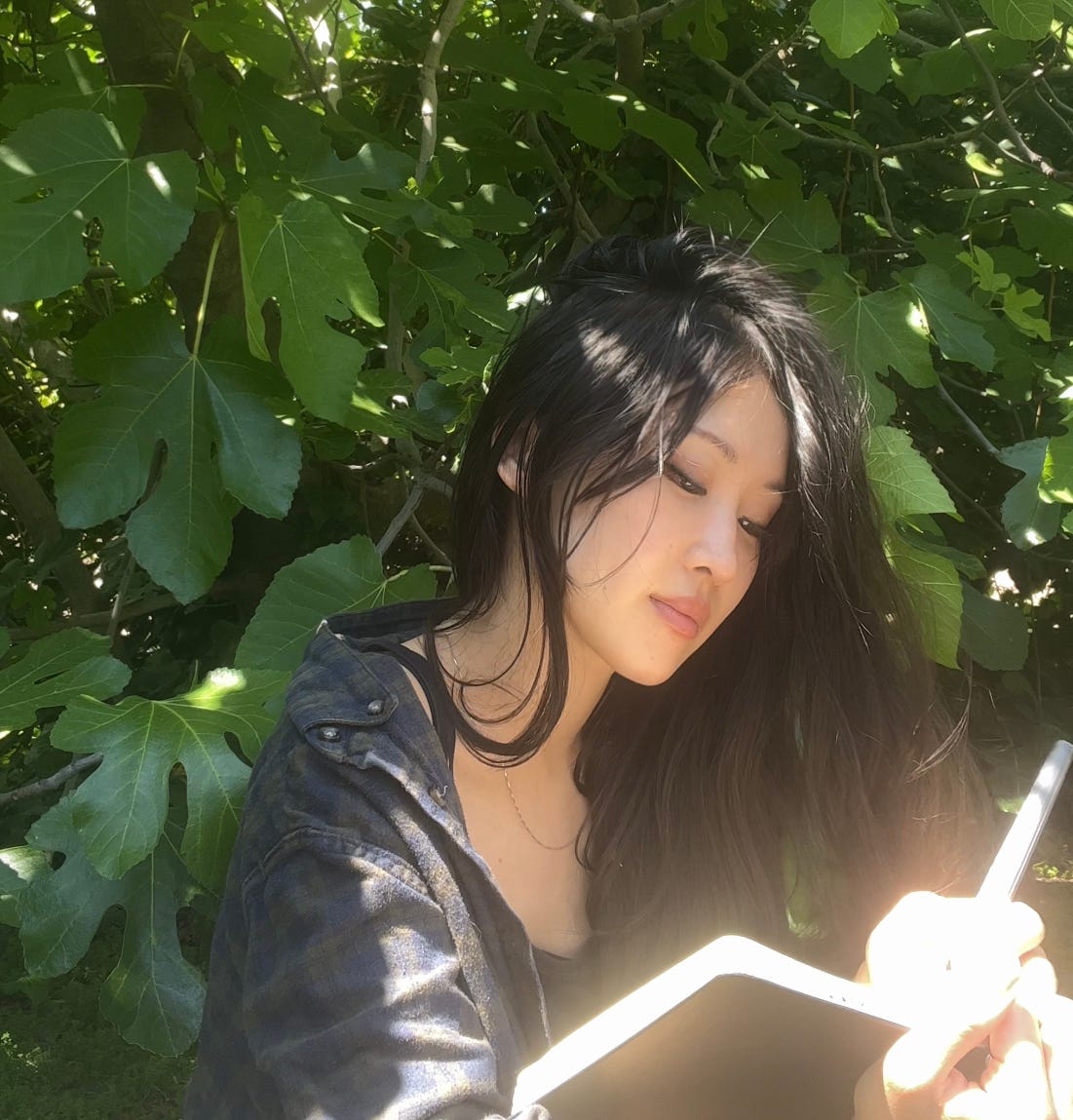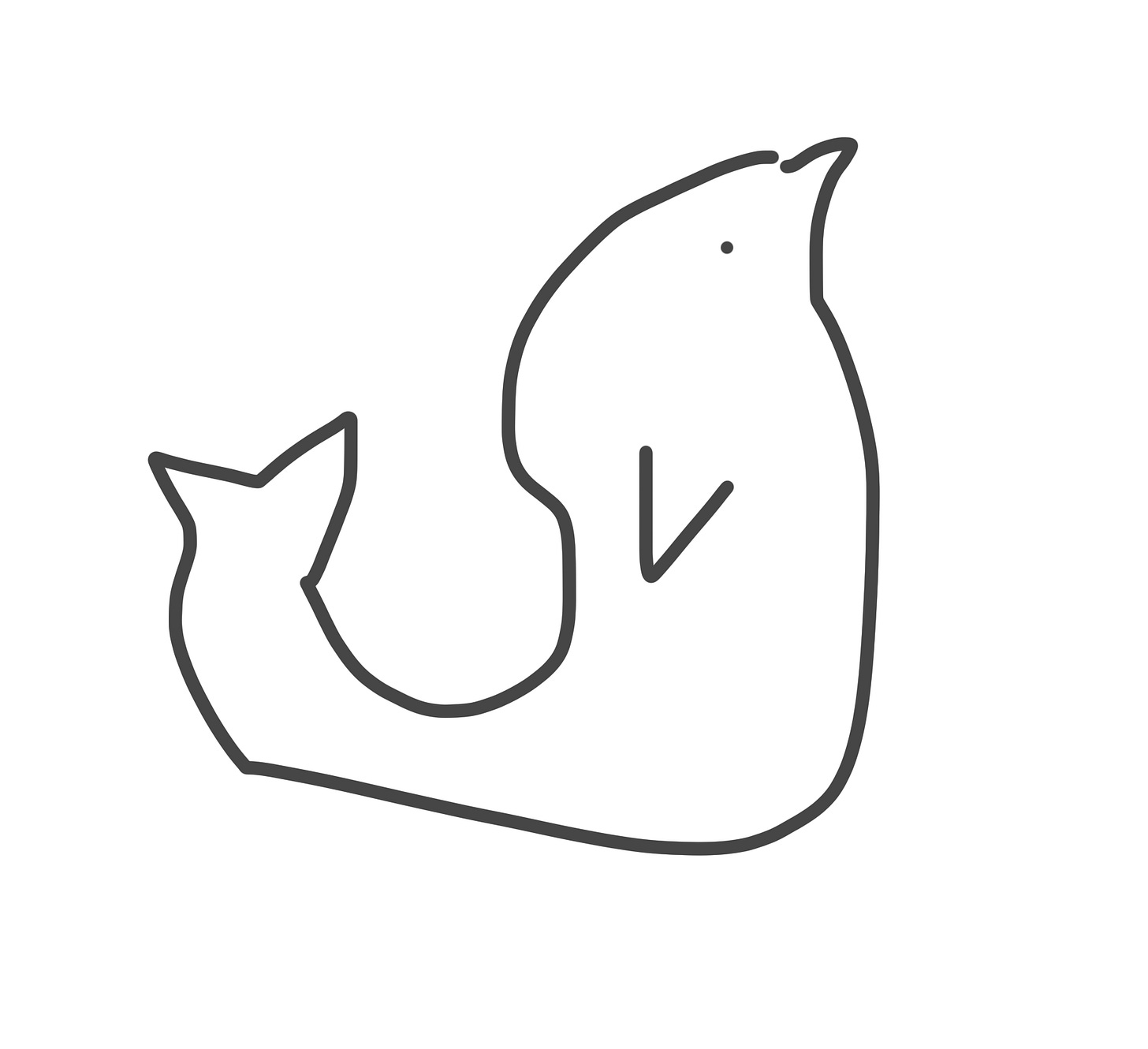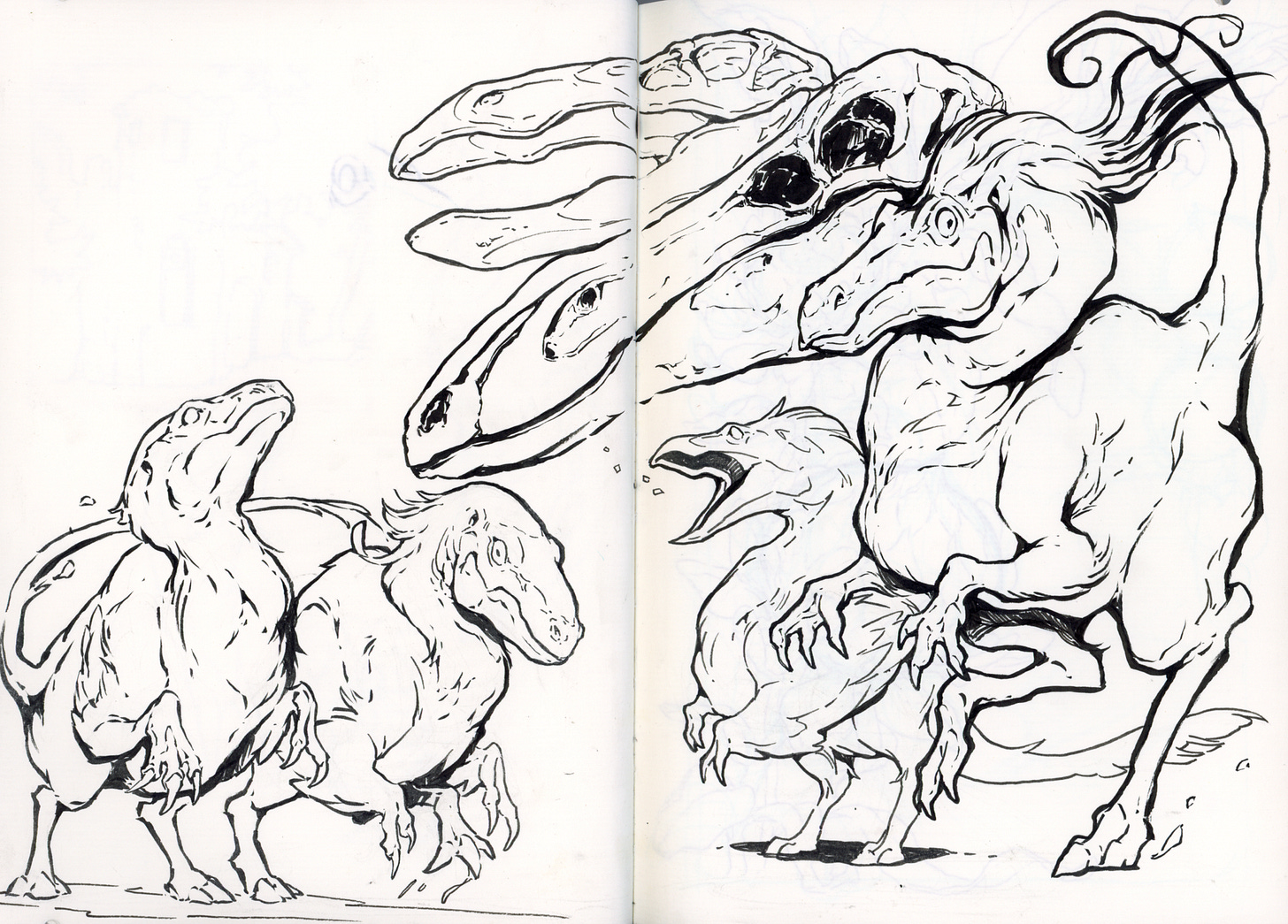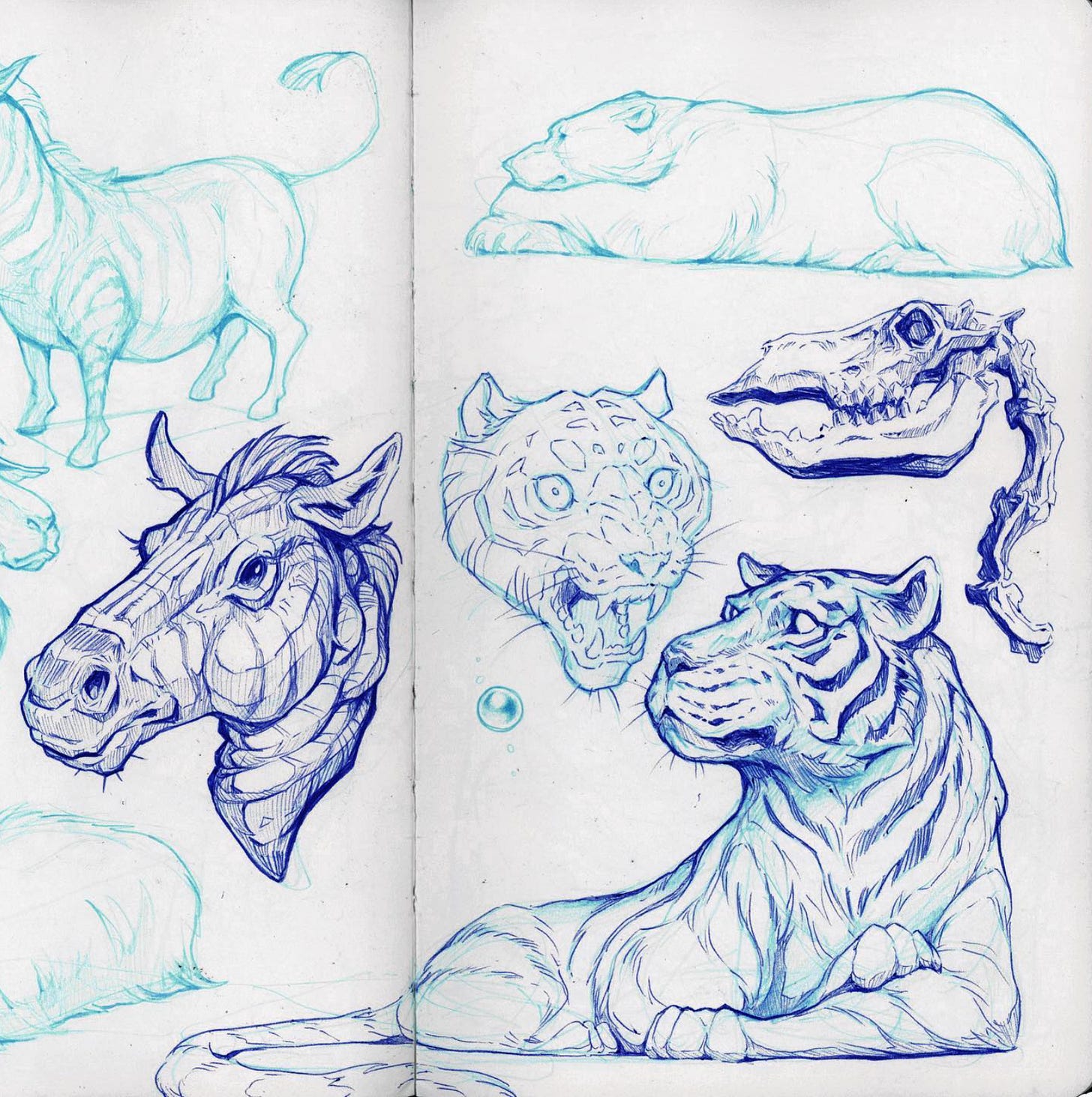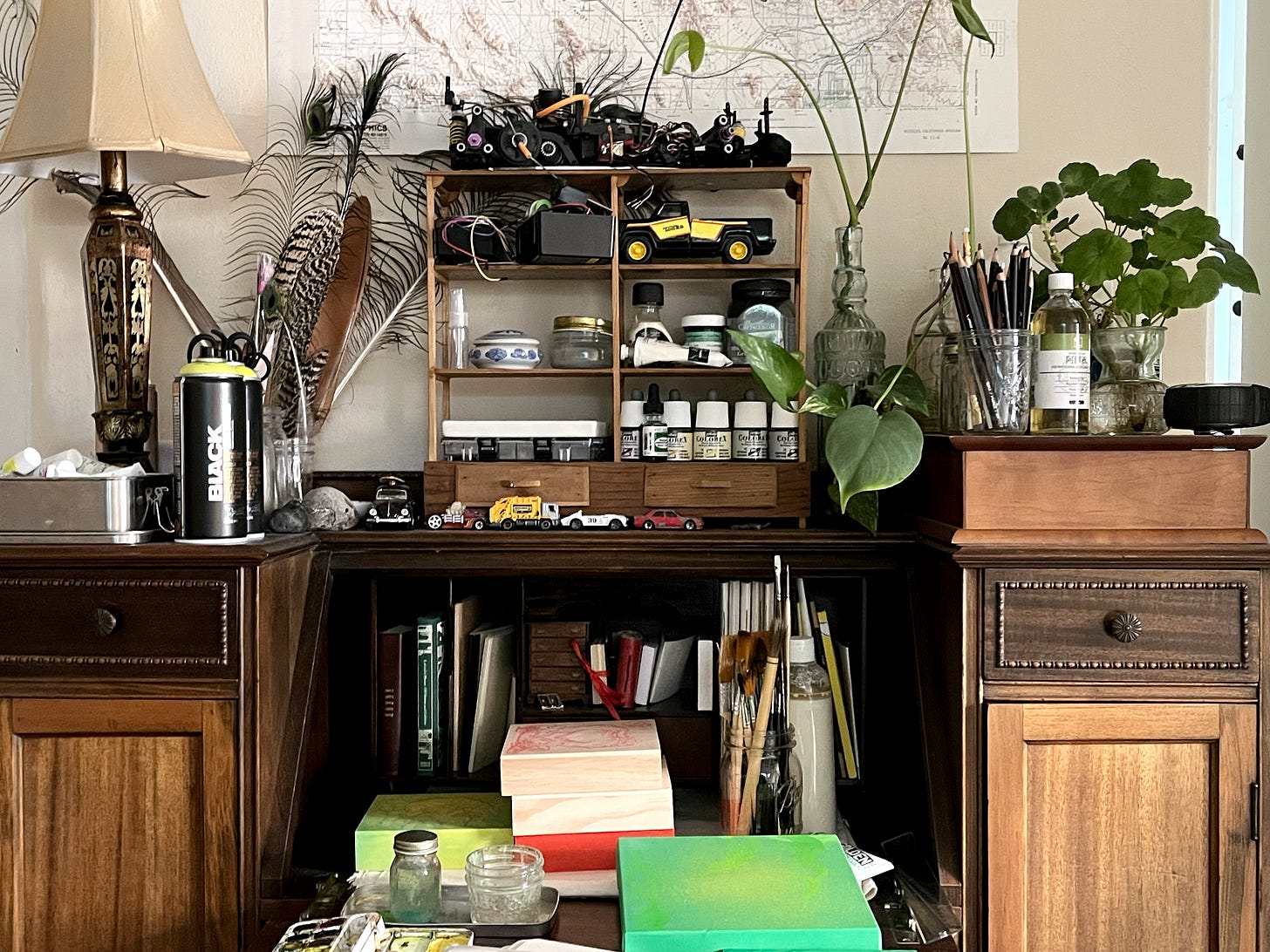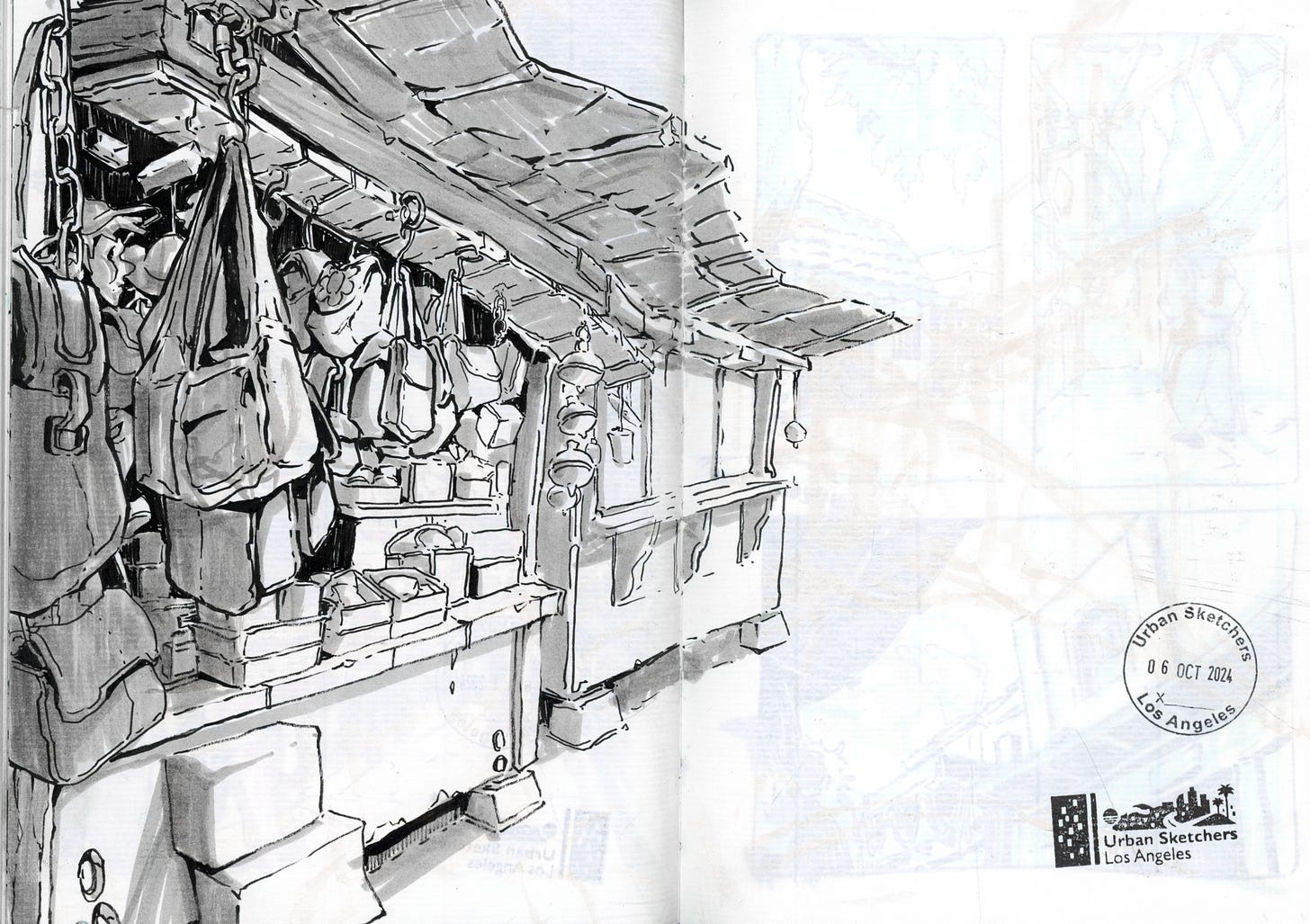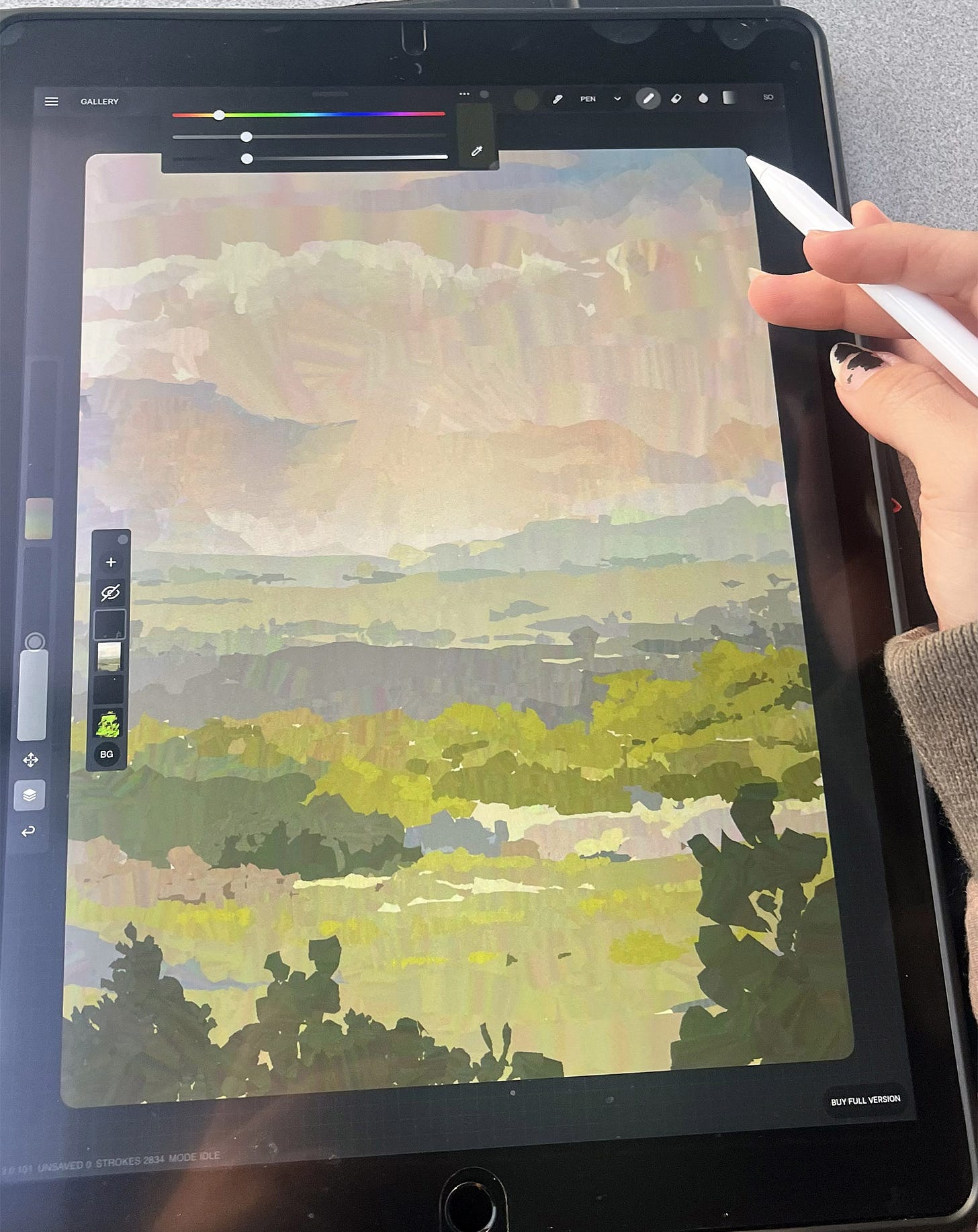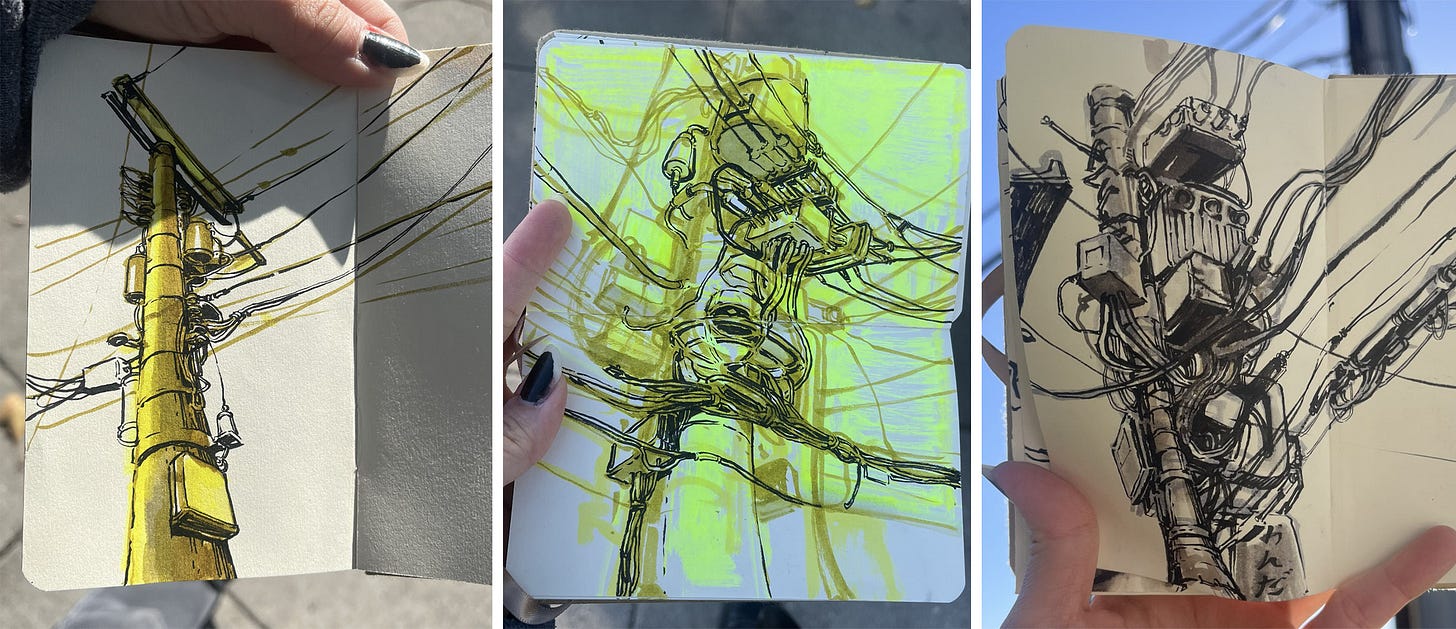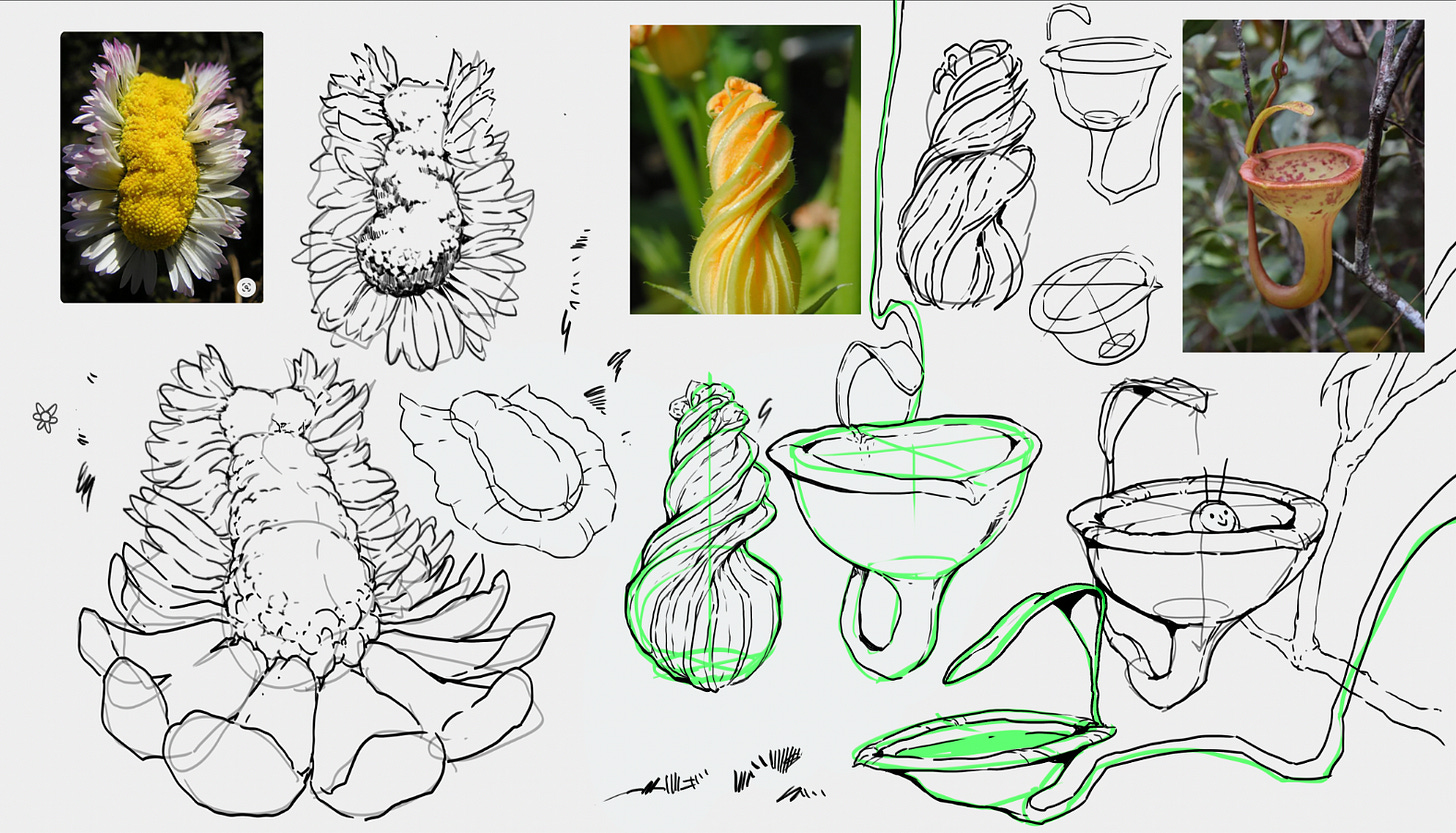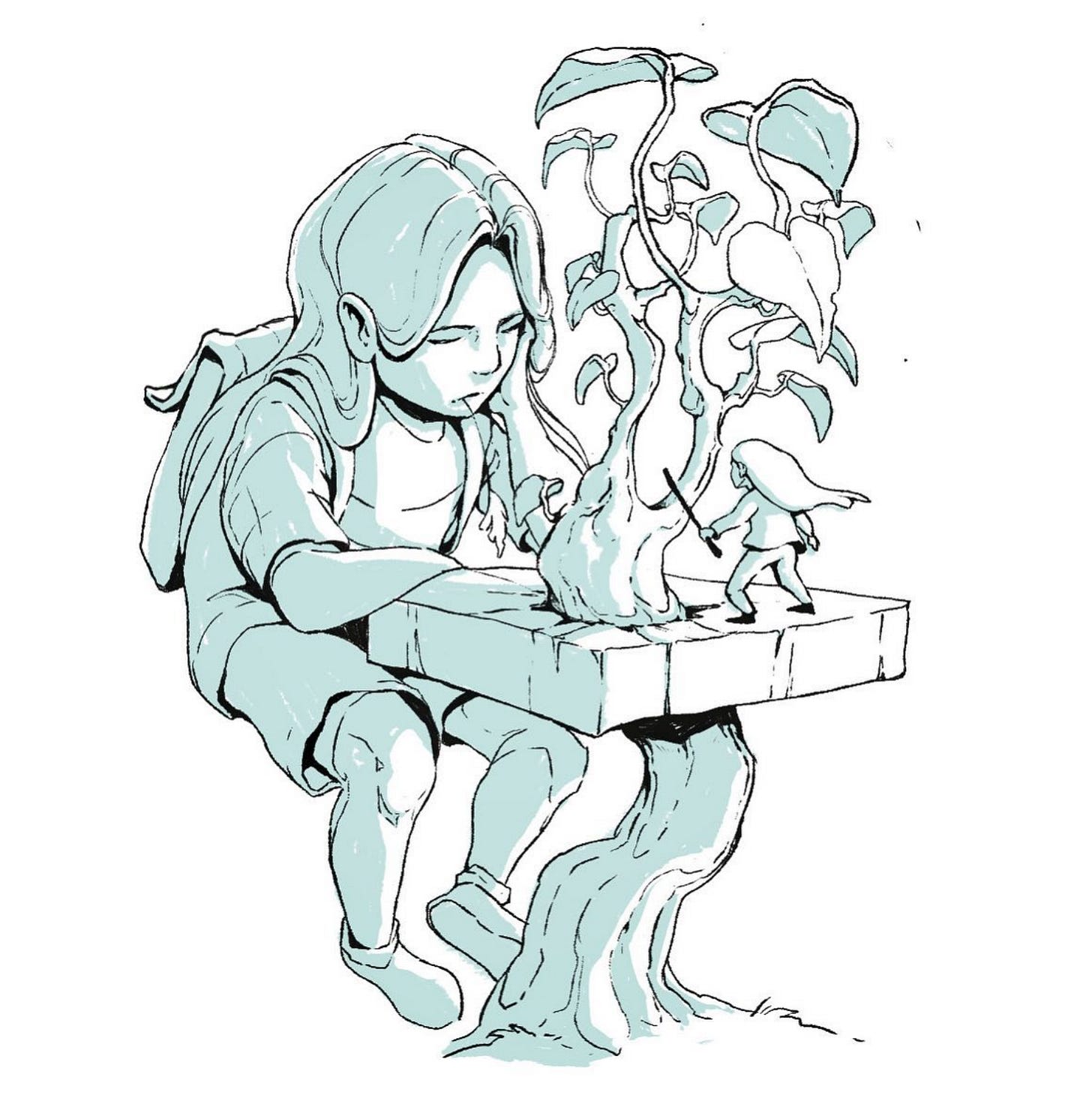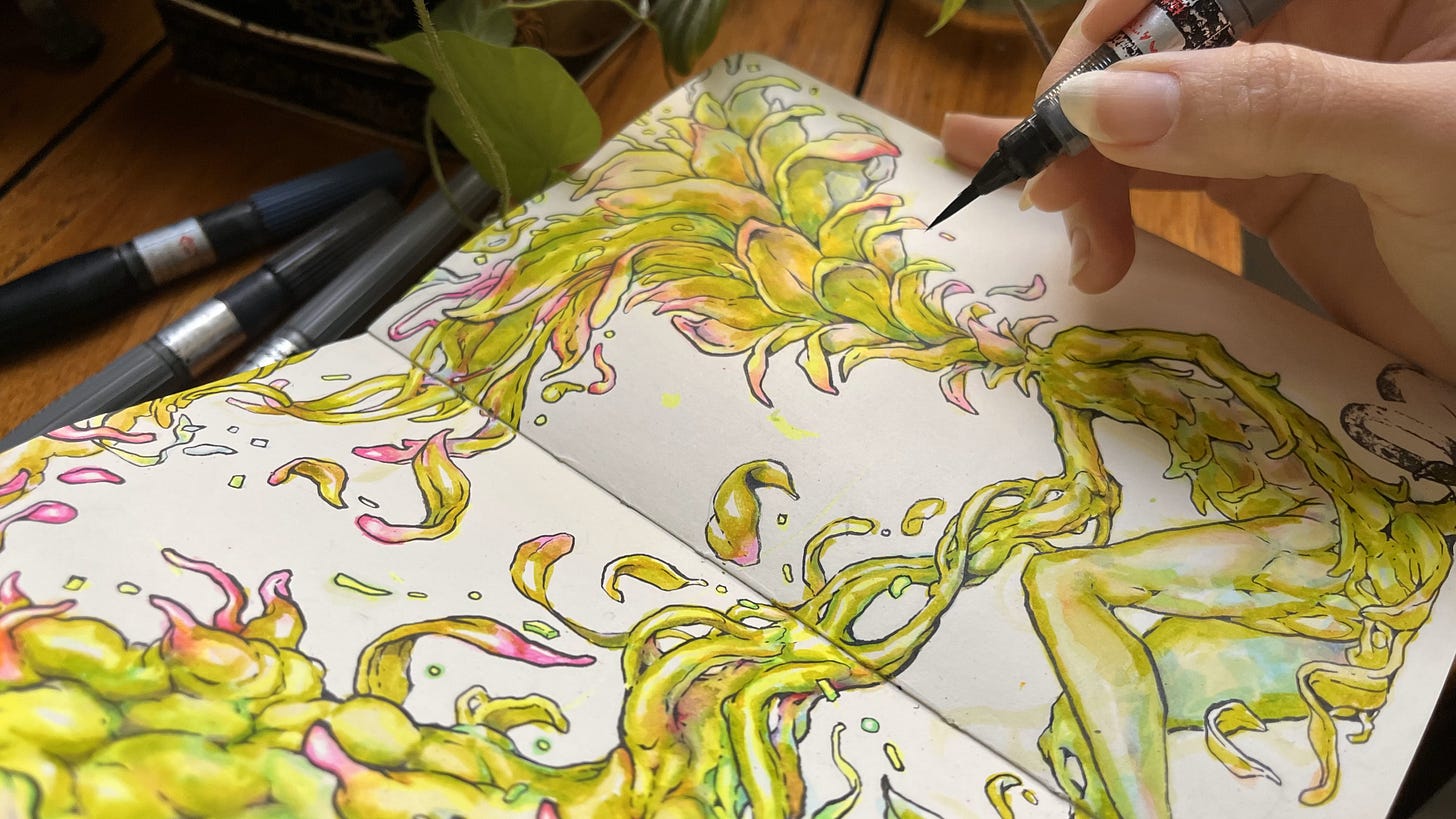Interview #36: The Art of Sorie Kim
Sorie Kim shares useful tips on drawing habits and observational sketching
Hello art community!!! Today’s interview is full packed with useful tips on getting better at drawing and sketching. Share in the comments which lesson was most helpful to you! :))
For those just finding me - I’m Madalina, an artist and illustrator who loves discovering and talking to many fellow artists. I now share these conversations through monthly interviews available to read for everyone :)
Sorie Kim is a LA-based artist and instructor who has taught courses for Brainstorm School, Warner Bros. Discovery Access, Create Now, Domestika and many more. She's deeply inspired by the natural world, especially by animals, plants and creatures. And she loves exploring the balance between life drawing and imagination in her sketchbooks.
✎ Hi Sorie and thank you for joining forArtists. How would you describe your artistic journey that led you to where you are today?
Hey Madalina, thank you for having me!
The first thing I ever remember drawing is a seal. It looked something like this:
Sometimes he was with other seal friends, sometimes he was in the forest or the circus. I would just draw the same guy over and over again.
I had an art teacher as a kid who I still think about often. I don’t remember anything about the first day of school other than drawing with her. Watching her draw blew my mind! It was some serious magic. On the last day of our classes together she gave me a box of Prismacolors that have become way too precious to use up. She’s probably the reason I became a teacher.
Around high school was when I decided I would pursue art for the rest of my life. I still didn’t think that a creative career was a viable option, but I figured I could always make time to draw for myself, and I’ve been very protective over that time ever since.
My friends and I had a ritual of going up to the roof of a neighborhood store to draw. It felt like a floating alien landscape in the middle of suburbia. I would sneak out night after night, backpack filled with cans of paint. This is where I first wrestled with the fear of the blank page. I’d watch my friends put down bold, confident lines while I sat frozen, terrified to commit. The wall was sacred, and I didn’t trust myself to put up anything worthy. I remember so many nights I would climb down from that roof without having drawn a single line.
I went to an art school for 2 years before dropping out. I traveled for a bit and then eventually landed in LA. Around that time, I discovered Kim Jung Gi’s work and I fell hard for the technical side of drawing. I became obsessed with observational sketching. Suddenly, everything around me became a puzzle to solve. I worked at a bunch of restaurants/cafes/bars, and saved up to take classes. I was drawing as much as I could in my spare time. It never felt like enough.
My first opportunity to teach came through Brainstorm School, and I’ll always be grateful they took a chance on me. I was so nervous I cried the night before the first class, but turns out teaching means I get to talk about my favorite thing for hours. Teaching changed everything. It felt like learning to draw from scratch, taking apart everything and putting it back together again. Over time, it also broke down rigid internal doctrines I had built up in my head. I’d spent so long obsessing over technical perfection, rules about what made a drawing correct, what counted as progress. But in the classroom I was constantly shown new approaches and perspectives. I got to see so many different artists take on the same problem in their own way. Every artist has their own weird little inner world, and it's the most important thing to keep that intact.
Recently there's been a bit of a shift. For the first time, I’ve been stepping away from drawing as my sole focus. I’ve spent my entire life devoted to one thing, and now it’s like something flipped. I want to code, design, paint, animate, tell stories- everything all at once. Probably the least efficient way to learn, but it’s honestly the most fun I’ve ever had!
✎ How did you improve your inking skills over the years? Were there influences that helped shape your style?
Very slowly! I think it’s just a lot of repetition over a long period of time. Biggest influences for ink are Kim Jung Gi, Moebius, Katsuya Terada, Junji Ito, Anton Seder, Sergio Toppi, and James Jean. For classes, Jeffrey Alan Love and Peter Han’s classes were incredibly formative.
✎ What was the moment or drawing that made you feel like a professional artist with solid skills?
I don’t think I consider myself a professional artist, I just really like to draw.
In terms of learning any skill, at some point it becomes less about figuring out the mechanics and more about play. Things that we had to break down and analyze become second nature. It’s like an open world rpg - there’s no singular destination, we can keep learning forever, and we get to play however we want!
✎ What is your relationship with your sketchbook? Do you draw every day or just when you feel inspired?
I do sketch every day, but it doesn’t always look the same. Sometimes I get to draw for the whole day, some days it’s just 10 minutes. Some habits that have been great for my creative practice (especially on the days that are 90% admin work) are:
1. At least 10 min of drawing before I start the day, no matter how busy.
2. Micro sketching - sneaking in short low effort sketches whenever there’s down time (waiting for the train, in between meetings, etc.)
3. Observing. Even when we're not actively drawing, there’s a lot of beautiful things to notice and collect as we go through the day.
✎ If we could take a glimpse at your desk, what tools are always there ready to go?
Digital tools are the Cintiq (software: Photoshop, Heavypaint, Procreate, Dreams) and my iPad. For traditional materials - I try to keep everything out if possible (I will forget what I don’t see), but the favorite children are brush pens, ballpoint pens, some kind of felt tips, colored mechanical pencils, and highlighters.
✎ For many artists, drawing outdoors is very challenging. I have not yet been able to find a set up and technique that allows me to feel comfortable drawing anywhere. Do you have any tips or strategies for drawing in any location?
When we sketch on location, we’re dealing with a lot of constraints and variables. We’re limited to the supplies on us and whatever time we have. Our subjects can move, the lighting will shift, and it might get too hot or cold. But instead of trying to curate the perfect environment, we have to lean into the discomfort. The moving parts are what makes the experience interesting, and it will force us to run into problems to solve.
These are my tips:
• make the set up as minimal as possible. I keep a small sketchbook (usually 5x7), and some pen/marker. For painting, I use HeavyPaint on my iPad or phone (the pen tool on Heavy feels the closest to a traditional brush pen).
• keep using the same materials and process (at least for a while). Take on different subjects and perspectives while keeping the medium consistent.
• change up the duration of time.
• shift the focus from the result to the experience. The drawing is just a souvenir.
✎ How do you usually tackle subjects that you have never drawn before?
I like to draw the subject over and over until I get familiar with it.
The goal would be to understand the forms, so I break the subject down into its simplest components.
We’re taking away more and more polygons until we’re left with the core.
✎ What is the part of the sketching process that you love the most?
It feels lame to say all of it, so 2 specific feelings.
Sometimes drawing feels like getting lost in a forest. I’ve never seen anything like this place before, and I have no idea where I am. It's seemingly infinite. I’m just wandering around in awe. As I’m writing this out I’m realizing this may read like a horror movie, but I swear it's the most beautiful feeling.
Then sometimes it's a garden. I’ve been here many times before, and I’ve walked this exact path before. I’ve tended to these trees and flowers. In fact, I’ve picked them out individually and I know them by name. When I'm here, drawing feels closer to a meditation.
But honestly I love all of it.
✎ Your drawings go beyond reality. You also add a lot from your imagination. How do you manage to alter things while keeping them believable?
Form and perspective! If all the components in a drawing share the same spatial logic—like consistent lighting, perspective, and structure—it feels believable even if it’s made up.
We can practice sketching from imagination in tandem with observational sketching by changing forms/ adding in little pieces of fantasy while referencing the perspective/lighting from life.
✎ What are the projects you are working on right now?
Currently I’m working on a little game about grubs, and some short animated pieces. Both coding and animating has been frying my brain in the best way. Hope to share them soon!
✎ Let’s finish with the question you receive most often in your dms.
What brush do you use? - it’s the Pentel Pigment Brush Pen (:
☆☆ Learn more about Sorie's work on her website and Instagram.





